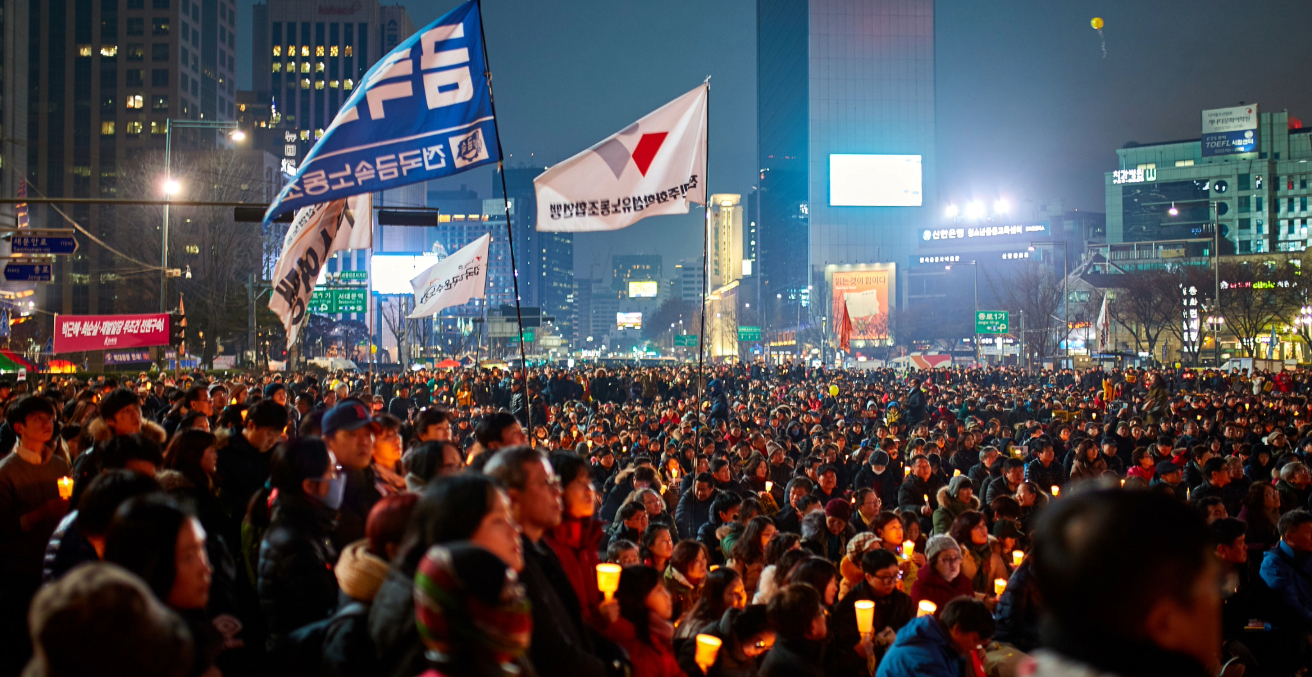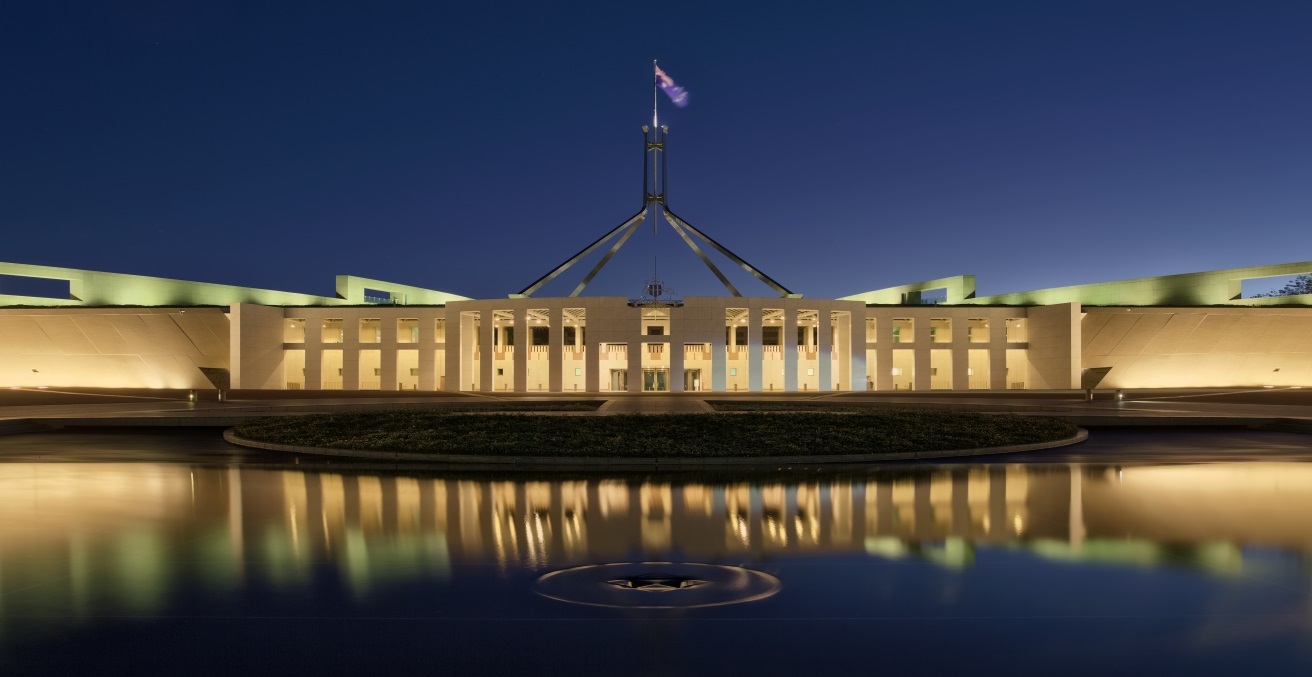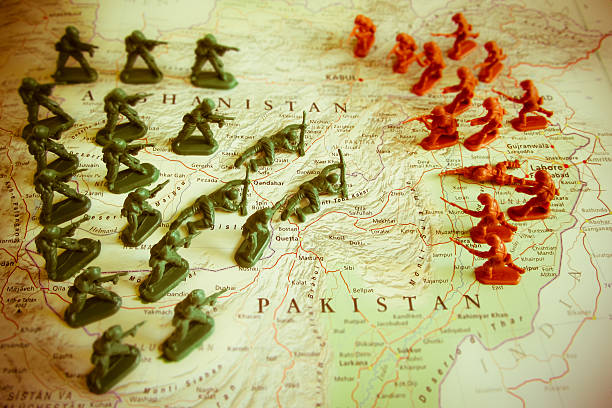South Korean politics has never been more dynamic than it is this year since democratisation. In early January, the world watched two unprecedented and chaotic standoffs between Yoon Suk Yeol’s presidential guards and the police, after Yoon ordered his guards to block the police from executing a court-issued detention warrant.
During the second attempt, the police successfully apprehended Yoon on 15 January. He was formally arrested on 19 January. This marked an unprecedented moment in South Korean history, as Yoon became the first sitting president to be arrested—despite his impeachment, he had not yet been formally removed from office and was still awaiting the Constitutional Court’s ruling.
Between Yoon’s arrest and the Constitutional Court’s ruling on 4 April, the country’s political dynamics grew even more turbulent. Some of Yoon’s supporters stormed the Western District Court, which had issued his arrest warrant, vandalising property and violently clashing with police. Far-right groups rallied in support of Yoon, inciting violence and spreading narratives that undermined democratic institutions and norms. Shockingly, several legislators from the ruling People Power Party (PPP) joined these far-right groups, further legitimising their anti-democratic rhetoric.
It was in this context that a snap presidential election was called and held on 3 June. In the election, Democratic Party candidate Lee Jae Myung won and became the 21st president of South Korea with 49.42 percent of the vote, narrowly defeating the PPP candidate, Kim Moon-soo, who received 41.15 percent. This outcome shows that despite the clearly undemocratic actions taken by Yoon and the PPP, a significant portion of the South Korean electorate continued to support the party. Meanwhile, the far-right groups that had rallied around Yoon remain highly active in mobilising against the new administration—though they now seem to have largely forgotten about Yoon himself in their protests. What does all of this mean for South Korean democracy?
Authoritarian-led party system
Although Korean democracy has demonstrated resilience by weathering this year’s political turbulence, I still see significant obstacles to its further advancement. Among them are the deep authoritarian legacies entrenched in the party system and the political cleavages that continue to shape public attitudes and behavior.
South Korea’s party system was shaped during its authoritarian era. The People Power Party (PPP) is a major successor to those authoritarian governments. Before democratisation, several political parties were founded by different dictators. Although there were breaks, mergers, and rebranding efforts during and after democratisation, the PPP’s direct predecessor is the Democratic Liberal Party (DLP), founded in 1990. The DLP was created through the merger of three parties, one of which was the Democratic Justice Party (DJP), established by the military dictator Chun Doo-hwan. In 1995, many former DJP members were purged from the DLP, and the party rebranded itself as the New Korea Party (NKP), and later as the PPP. However, the public still associates the PPP with the DJP. It is undeniable that the PPP’s origins are partly rooted in the DJP and its authoritarian legacy.
In many ways, this authoritarian-led party system prevents the country from making a clean break with its authoritarian past. The PPP has repeatedly changed its name since democratisation in an effort to rebrand itself, but it has never fully embraced core democratic principles.
Juxtaposition of 2016 and 2024 impeachments
Since democratisation, the PPP has enjoyed steady and strong support, winning both presidential and general elections. Although it lost executive power after two consecutive defeats, the party quickly returned to power in 2008. However, this does not mean the party has been free of internal struggles. It has long been divided into two factions: one rooted in the authoritarian past and the other reform-minded. When Park Geun-hye—the daughter of former president Park Chung-hee—was impeached in 2016, members of the reform-minded faction who voted for her impeachment were punished by voters and failed to be re-elected. Since then, the party’s authoritarian faction has strengthened its grip on power. The party also appears to have drawn a clear lesson from the 2016 impeachment: its most reliable and loyal support base is composed of voters with strong authoritarian leanings.
The 2016 impeachment not only empowered the authoritarian faction within the party but also amplified far-right voices among the party’s core supporters and strengthened their capacity for mobilisation. Numerous conservative organisations led protest movements to oppose Park’s impeachment and to punish those who supported it. Through ongoing mobilisation, these groups developed lasting networks and tactics that persist to this day.
At first glance, such groups might appear to be merely pro-Park—just as this year’s protesters seemed to be pro-Yoon. However, these demonstrators were, and continue to be, more than just supporters of a single politician. After Park’s impeachment, they quickly shifted their focus rather than continuing to rally around her. In reality, they are supporters of South Korea’s authoritarian past. Much of their rhetoric centers on legitimising the rule of former autocrats.
The series of events earlier this year reflects this development. When Yoon faced impeachment, far-right groups quickly mobilised, spreading narratives that legitimised his declaration of martial law by leveraging their existing networks and tactics. Mainstream politicians within the PPP also defended Yoon, arguing that the declaration of martial law falls within presidential powers and can be justified for highly strategic purposes. The party leadership suppressed dissenters who attempted to break with Yoon. Some legislators from the party appeared at far-right rallies and echoed the same rhetoric from those events in the National Assembly. These interactions between the party and far-right groups emboldened some protesters, leading to direct attacks on democratic institutions such as the courts.
None of this occurred during Park’s impeachment. The party was divided, and reform-minded legislators openly opposed Park. Far-right mobilisation was slow to develop and initially struggled to gain momentum, although it eventually grew large and powerful.
Future of South Korean democracy
The country’s authoritarian past remains deeply embedded in its partisan politics. After democratisation, conservative intellectuals began crafting narratives that heroised Park Chung-hee, producing hagiographic accounts of his leadership. The fervor surrounding Park peaked in the late 1990s, when South Korea faced an economic crisis and was forced to accept an IMF bailout; during this time, many looked for a strong leader to rescue the nation. This conservative movement gradually expanded to embrace other autocrats, including Syngman Rhee and Chun Doo-hwan. This movement affected many conservatives in the country and became one of the major cleavages between conservatives and progressives.
The PPP, initially fluctuating between two factions, has now clearly aligned itself with the authoritarian faction, coalescing with its core conservative supporters who hold a deeper authoritarian nostalgia.
This all suggests that the future of South Korean democracy hinges on how the new administration addresses the major political cleavage surrounding the authoritarian past and the rise of far-right groups. Also, the PPP needs internal reform. Former autocrats should not be glorified within formal institutions, and their use of violence against civilians must be publicly condemned by members of parliament, regardless of party affiliation. This shift in rhetoric should begin within formal institutions, including among PPP members, to gradually delegitimise authoritarian nostalgia within civil society.
Myunghee Lee, is a Ph.D. in political science and an assistant professor at James Madison College of Public Affairs at Michigan State University.
This article is published under a Creative Commons License and may be republished with attribution.





